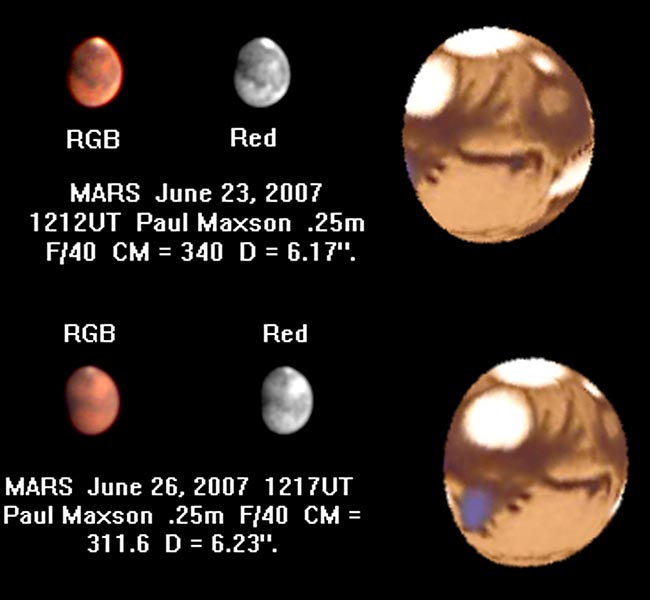Mars and Earth Converge

By the time you finish reading this sentence, you'll be about 25 miles closer to Mars, according to NASA calculations.
Earth and Mars are converging, setting up a great skywatching opportunity for later this year.
Here's what's going on: Earth has the inside track as the two worlds orbit the sun. Inner planets orbit more quickly than outer planets because of the laws of gravity. Earth requires 365 days to go around the sun once, whereas a year on Mars is 687 Earth-days.
So every 26 months, Earth passes Mars on this orbital trek.
When the pass occurs, Earth and Mars are on the same side of the sun, as seen from above, with all three objects lined up in a row, and astronomers say Mars is at opposition.
As our planet catches the red planet, the distance between them shrinks dramatically. (It's an opportune time for sending missions to Mars, such as the recently launched Phoenix Lander.)
Right now, the distance between the two worlds is shrinking at a rate of 22,000 mph, or about 25 miles per sentence, NASA figures.
Breaking space news, the latest updates on rocket launches, skywatching events and more!
By late September, Mars will be one of the brighter objects in the night sky. The closest approach will occur in December, when Mars will be brighter than every star in the sky.
You might have heard that Mars will outshine our moon on Aug. 27. Not true. That rumor is rooted in an annual email that has come to be known as the Mars Hoax, one of the many enduring, mistaken ideas about the red planet.
Each August, various versions of the email land in inboxes all around the world. The hoax can be traced back to a 2003 event, when Mars and Earth were closer than they'd been in thousands of years. (At the risk of further fueling the rumor, here is an account of the 2003 event.) But the proximity was an incremental improvement, in terms of viewing Mars, compared to the vast distance that always separates the two worlds. Never can Mars even approach the brightness of the moon in our sky.
Instead, Mars will remain, as always, no more than a point of light to the naked eye. It'll grow steadily brighter through this autumn. And in modest backyard telescopes later this year, the red planet will be revealed as a ruddy disk, and sharp-eyed observers might spot some detail.
Mars currently rises around 3 a.m. local time in the eastern sky.
- Make Your Own Sky Map
- Mars: A History of False Impressions
- The 10 Best Mars Images Ever
Join our Space Forums to keep talking space on the latest missions, night sky and more! And if you have a news tip, correction or comment, let us know at: community@space.com.

Rob has been producing internet content since the mid-1990s. He was a writer, editor and Director of Site Operations at Space.com starting in 1999. He served as Managing Editor of LiveScience since its launch in 2004. He then oversaw news operations for the Space.com's then-parent company TechMediaNetwork's growing suite of technology, science and business news sites. Prior to joining the company, Rob was an editor at The Star-Ledger in New Jersey. He has a journalism degree from Humboldt State University in California, is an author and also writes for Medium.
